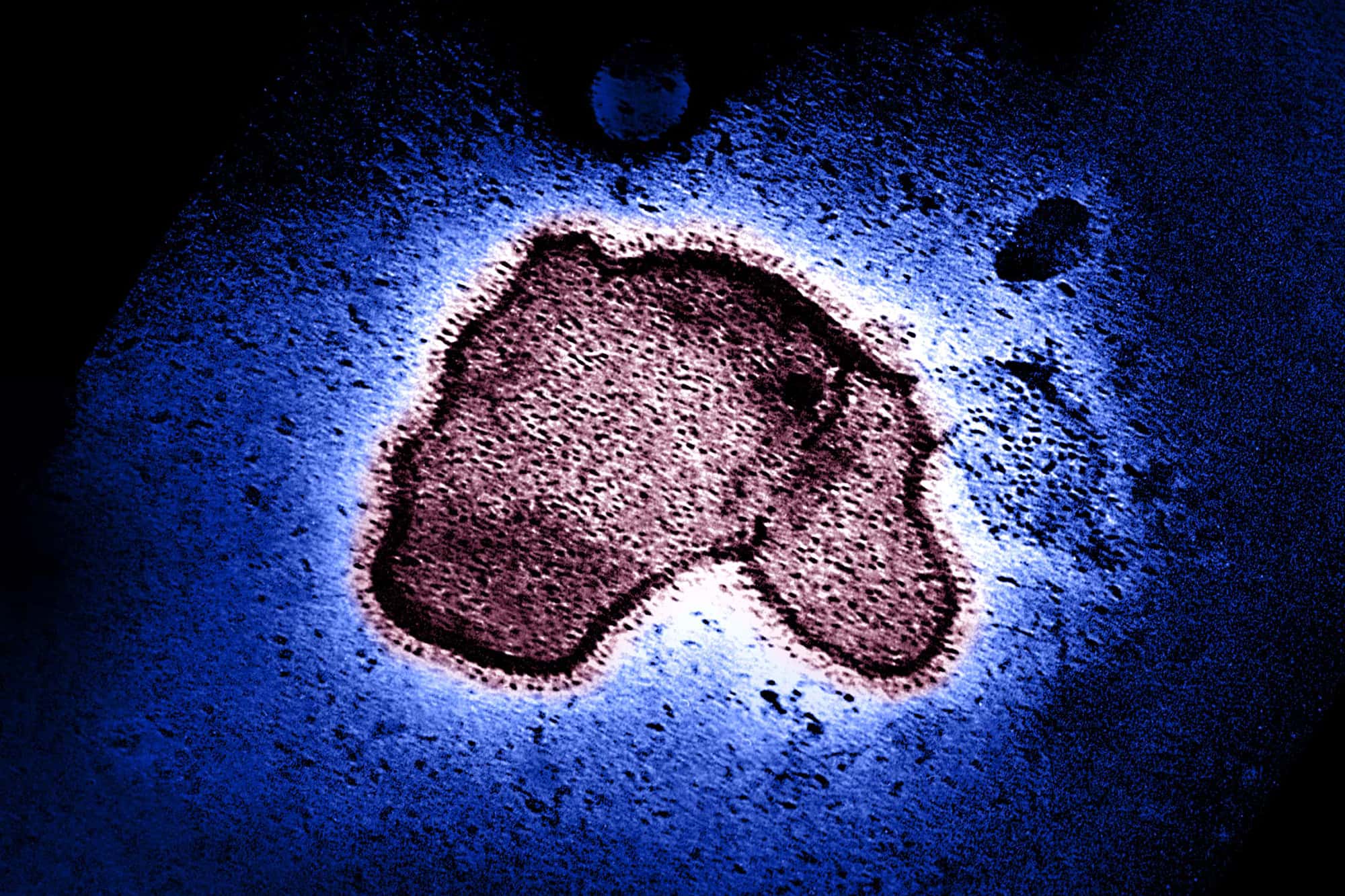Discriminating Parkinson’s disease patients from healthy controls using nasal respiratory airflow

Feldman, J. L., Del Negro, C. A. & Gray, P. A. Understanding the rhythm of breathing: So near, yet so far. Annu Rev. Physiol. 75, 423–452 (2013).
Google Scholar
Ratnovsky, A., Elad, D. & Halpern, P. Mechanics of respiratory muscles. Respir. Physiol. Neurobiol. 163, 82–89 (2008).
Google Scholar
Baille, G. et al. Early occurrence of inspiratory muscle weakness in Parkinson’s disease. PLoS One 13, e0190400 (2018).
Google Scholar
Weiner, P. et al. Respiratory muscle performance and the perception of dyspnea in Parkinson’s disease. Can. J. Neurological Sci. 29, 68–72 (2002).
Google Scholar
De Pandis, M. F. et al. Modification of respiratory function parameters in patients with severe Parkinson’s disease. Neurol. Sci. 23, 69–70 (2002).
Google Scholar
Herer, B., Arnulf, I. & Housset, B. Effects of Levodopa on Pulmonary Function in Parkinson’s Disease. Chest 119, 387–393 (2001).
Google Scholar
Polatli, M., Akyol, A., Çilda, O. & Bayülkem, K. Pulmonary function tests in Parkinson’s disease. Eur. J. Neurol. 8, 341–345 (2001).
Google Scholar
Pal, P. K., Sathyaprabha, T. N., Tuhina, P. & Thennarasu, K. Pattern of subclinical pulmonary dysfunctions in Parkinson’s disease and the effect of levodopa. Mov. Disord. 22, 420–424 (2007).
Google Scholar
Sabaté, M., González, I., Ruperez, F. & Rodríguez, M. Obstructive and restrictive pulmonary dysfunctions in Parkinson’s disease. J. Neurol. Sci. 138, 14–19 (1996).
Google Scholar
Seccombe, L. M. et al. Abnormal ventilatory control in Parkinson’s disease-Further evidence for non-motor dysfunction. Respir. Physiol. Neurobiol. 179, 300–304 (2011).
Google Scholar
Mikaelee H., Yazdchi M., Ansarin K., Arami M. Pulmonary function test abnormalities in Parkinson disease. The Internet Journal of Pulmonary Medicine. 2006;8. www.thoracic.org
Izquierdo-Alonso, J. L., Jiménez-Jiménez, F. J., Cabrera-Valdivia, F. & Mansilla-Lesmes, M. Airway Dysfunction in Patients with Parkinson’s Disease. Lung 172, 47–55 (1994).
Google Scholar
Won, J. H., Byun, S. J., Oh, B. M., Park, S. J. & Seo, H. G. Risk and mortality of aspiration pneumonia in Parkinson’s disease: a nationwide database study. Sci. Rep. 11, 6597 (2021).
Google Scholar
Vijayan, S., Singh, B., Ghosh, S., Stell, R. & Mastaglia, F. L. Brainstem ventilatory dysfunction: A plausible mechanism for dyspnea in Parkinson’s Disease? Mov. Disord. 35, 379–388 (2020).
Google Scholar
Braak, H. et al. Staging of brain pathology related to sporadic Parkinson’s disease. Neurobiol. Aging 24, 197–211 (2003).
Google Scholar
Tomori, Z., Fung, M. L., Donic, V., Donicova, V. & St John, W. M. Power spectral analysis of respiratory responses to pharyngeal stimulation in cats: comparisons with eupnoea and gasping. J. Physiol. 485, 551–559 (1995).
Google Scholar
Sant’ambrogio, G., Tsubone, H. & Sant’ambrogio, F. B. Sensory information from the upper airway: Role in the control of breathing. Respir. Physiol. 102, 1–16 (1995).
Google Scholar
Clark, F. J. & von von Euler, C. On the regulation of depth and rate of breathing. J. Physiol. 222, 267–295 (1972).
Google Scholar
Kikuta, S. et al. Neurons in the anterior olfactory nucleus pars externa detect right or left localization of odor sources. Proc. Natl. Acad. Sci. USA 107, 12363–12368 (2010).
Google Scholar
Schwarzacher, S. W., Rüb, U. & Deller, T. Neuroanatomical characteristics of the human pre-Bötzinger complex and its involvement in neurodegenerative brainstem diseases. Brain 134, 24–35 (2011).
Google Scholar
Pyatigorskaya, N. et al. Medulla oblongata damage and cardiac autonomic dysfunction in Parkinson disease. Neurology 87, 2540–2545, (2016).
Google Scholar
Oliveira, L. M., Baertsch, N. A., Moreira, T. S., Ramirez, J. M. & Takakura, A. C. Unraveling the mechanisms underlying irregularities in inspiratory rhythm generation in a mouse model of Parkinson’s disease. J. Neurosci. 41, 4732–4747 (2021).
Google Scholar
Fernandes-Junior, S. A., Carvalho, K. S., Moreira, T. S. & Takakura, A. C. Correlation between neuroanatomical and functional respiratory changes observed in an experimental model of Parkinson’s disease. Exp. Physiol. 103, 1377–1389 (2018).
Google Scholar
Garcia, A. J., Dashevskiy, T., Khuu, M. A. & Ramirez, J. M. Chronic intermittent hypoxia differentially impacts different states of inspiratory activity at the level of the preBötzinger complex. Front Physiol. 8, 571 (2017).
Google Scholar
Arshamian, A., Iravani, B., Majid, A. & Lundström, J. N. Respiration modulates olfactory memory consolidation in humans. J. Neurosci. 38, 10286–10294 (2018).
Google Scholar
Zelano, C. et al. Nasal respiration entrains human limbic oscillations and modulates cognitive function. J. Neurosci. 36, 12448–12467 (2016).
Google Scholar
Kahana-Zweig, R. et al. Measuring and characterizing the human nasal cycle. PLoS One 11, e0162918 (2016).
Google Scholar
Erdfelder, E., FAul, F., Buchner, A. & Lang, A. G. Statistical power analyses using G*Power 3.1: Tests for correlation and regression analyses. Behav. Res Methods 41, 1149–1160 (2009).
Google Scholar
Maio et al. LRRK2 activation in idiopathic Parkinson’s disease. Sci. Transl. Med. 10, 5429 (2018).
Google Scholar
Sidransky, E. & Lopez, G. The link between the GBA gene and parkinsonism. Lancet Neurol. 11, 986–998 (2012).
Google Scholar
Noto, T., Zhou, G., Schuele, S., Templer, J. & Zelano, C. Automated analysis of breathing waveforms using BreathMetrics: A respiratory signal processing toolbox. Chem. Senses 43, 583–597 (2018).
Google Scholar
Cai D., C. Zhang, X. He. Unsupervised Feature Selection for Multi-Cluster Data. In: Proceedings of the 16th ACM SIGKDD International Conference on Knowledge Discovery and Data Mining.; 2010:333-342.
Gutierrez, G. et al. Decreased respiratory rate variability during mechanical ventilation is associated with increased mortality. Intensive Care Med. 39, 1359–1367 (2013).
Google Scholar
Chen, Z., Li, G. & Liu, J. Autonomic dysfunction in Parkinson’s disease: Implications for pathophysiology, diagnosis, and treatment. Neurobiol. Dis. 134, 104700 (2020).
Google Scholar
Napoli N. J., Rodrigues V. R., Davenport P. W. Characterizing and Modeling Breathing Dynamics: Flow Rate, Rhythm, Period, and Frequency. Front Physiol. 12, (2022).
Mehanna, R. & Jankovic, J. Respiratory problems in neurologic movement disorders. Parkinsonism Relat. Disord. 16, 628–638 (2010).
Google Scholar
Giardino, N. D., Friedman, S. D. & Dager, S. R. Anxiety, respiration, and cerebral blood flow: implications for functional brain imaging. Compr. Psychiatry 48, 103–112 (2007).
Google Scholar
Spielberg C. DEVELOPMENT OF THE SPANISH EDITION OF THE STATE-TRAIT ANXIETY INVENTORY1. Interamerican Journal of Psychology. Published online 1971:3-4.
Vergara, I. A., Norambuena, T., Ferrada, E., Slater, A. W. & Melo, F. StAR: A simple tool for the statistical comparison of ROC curves. BMC Bioinforma. 9, 1–5 (2008).
Google Scholar
Huber, J. E., Darling, M., Francis, E. J. & Zhang, D. Impact of typical aging and Parkinson’s disease on the relationship among breath pausing, syntax, and punctuation. Am. J. Speech Lang. Pathol. 21, 368–379 (2012).
Google Scholar
McKay, L. C. & Feldman, J. L. Unilateral ablation of pre-Bötzinger complex disrupts breathing during sleep but not wakefulness. Am. J. Respir. Crit. Care Med. 178, 89–95 (2008).
Google Scholar
Stefani, A. & Högl, B. Sleep in Parkinson’s disease. Neuropsychopharmacology 45, 121–128 (2020).
Google Scholar
Yang, Y. et al. Artificial intelligence-enabled detection and assessment of Parkinson’s disease using nocturnal breathing signals. Nat. Med. 28, 2207–2215 (2022).
Google Scholar
Arzi A., Rozenkrantz L., Holtzman Y., Secundo L., Sobel N. Sniffing patterns uncover implicit memory for undetected odors. Current Biology. 24, (2014).
Fullard, M. E., Morley, J. F. & Duda, J. E. Olfactory Dysfunction as an Early Biomarker in Parkinson’s Disease. Neurosci. Bull. 33, 515–525 (2017).
Google Scholar
Tissingh, G. et al. Loss of olfaction in De Novo and treated Parkinson’s disease: Possible implications for early diagnosis. Mov. Disord. 16, 41–46 (2001).
Google Scholar
Sobel, N. et al. An impairment in sniffing contributes to the olfactory impairment in Parkinson’s disease. Proc. Natl. Acad. Sci. USA 98, 4154–4159, (2001).
Google Scholar
Günther R., et al. Impairment in respiratory function contributes to olfactory impairment in amyotrophic lateral sclerosis. Front Neurol. 9. (2018).
Sherer, T. B. Biomarkers for Parkinson’s Disease. Sci. Transl. Med. 3, 79ps14–79ps14 (2011).
Google Scholar
Chen-Plotkin, A. S. et al. Finding useful biomarkers for Parkinson’s disease. Sci. Transl. Med. 10, 6003 (2018).
Google Scholar
Liu, Y. et al. Monitoring gait at home with radio waves in Parkinson’s disease: A marker of severity, progression, and medication response. Sci. Transl. Med. 14, 9669 (2022).
Google Scholar
Powers, R. et al. Smartwatch inertial sensors continuously monitor real-world motor fluctuations in Parkinson’s disease. Sci. Transl. Med. 13, 7865 (2021).
Google Scholar
Kubin L. Neurobiology of Sleep–Wake Control. In: Pack A. I., ed. Sleep and Its Disorders. Translational Medicine Research. Springer, Dordrecht; 2022. https://doi.org/10.1007/978-94-024-2168-2_2
Cardinali D. P. The Timed Autonomic Nervous System. In: Autonomic Nervous System. Springer, Cham. 19–56. (2018).
Kleitman, N. Basic Rest-Activity Cycle-22 Years Later. Sleep 5, 311–317, (1982).
Google Scholar
Zirra, A. et al. Gender Differences in the Prevalence of Parkinson’s Disease. Mov. Disord. Clin. Pract. 10, 86–93 (2023).
Google Scholar
Virameteekul, S., Revesz, T., Jaunmuktane, Z., Warner, T. T. & De Pablo-Fernández, E. Clinical Diagnostic Accuracy of Parkinson’s Disease: Where Do We Stand? Mov. Disord. 38, 558–566 (2023).
Google Scholar
Kluger, D. S. & Gross, J. Respiration modulates oscillatory neural network activity at rest. PLoS Biol. 19, e3001457 (2021).
Google Scholar
Ashhad, S., Kam, K., Del Negro, C. A. & Feldman, J. L. Breathing Rhythm and Pattern and Their Influence on Emotion. Annu Rev. Neurosci. 45, 223–247 (2022).
Google Scholar
Ghazvineh, S. et al. Rhythmic air-puff into nasal cavity modulates activity across multiple brain areas: A non-invasive brain stimulation method to reduce ventilator-induced memory impairment. Respir. Physiol. Neurobiol. 287, 103627 (2021).
Google Scholar
Salimi, M. et al. Nasal airflow promotes default mode network activity. Respir. Physiol. Neurobiol. 307, 103981 (2023).
Google Scholar
Juventin, M. et al. Respiratory influence on brain dynamics: the preponderant role of the nasal pathway and deep slow regime. Pflug. Arch. 475, 23–35 (2023).
Google Scholar
Perl, O. et al. Human non-olfactory cognition phase-locked with inhalation. Nat. Hum. Behav. 3, 501–512 (2019).
Google Scholar
Del Negro, C. A., Funk, G. D. & Feldman, J. L. Breathing matters. Nat. Rev. Neurosci. 19, 351–367 (2018).
Google Scholar
Salimi, M. et al. Nasal Air Puff Promotes Default Mode Network Activity in Mechanically Ventilated Comatose Patients: A Noninvasive Brain Stimulation Approach. Neuromodulation 25, 1351–1363 (2022).
Google Scholar
Kluger, D. S. & Gross, J. Depth and phase of respiration modulate cortico-muscular communication. Neuroimage 222, 117272 (2020).
Google Scholar
Mohammed Yusuf, S. F., Bhise, A., Nuhmani, S., Alghadir, A. H. & Khan, M. Effects of an incentive spirometer versus a threshold inspiratory muscle trainer on lung functions in Parkinson’s disease patients: a randomized trial. Sci. Rep. 13, 2516 (2023).
Google Scholar
Ribeiro, R. et al. Breath-stacking and incentive spirometry in Parkinson’s disease: Randomized crossover clinical trial. Respir. Physiol. Neurobiol. 255, 11–16 (2018).
Google Scholar
Haehner, A. et al. Olfactory Training in Patients with Parkinson’s Disease. PLoS One. 8, (2013).
link






